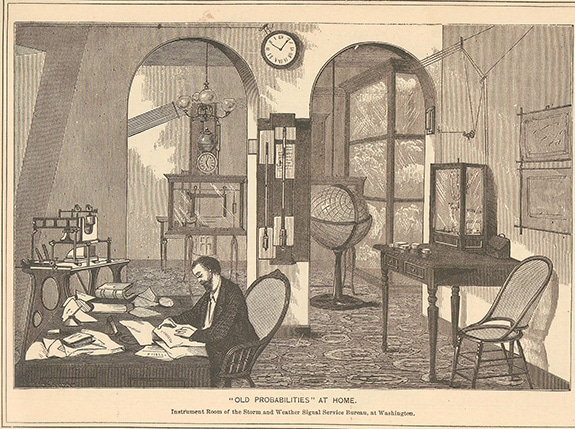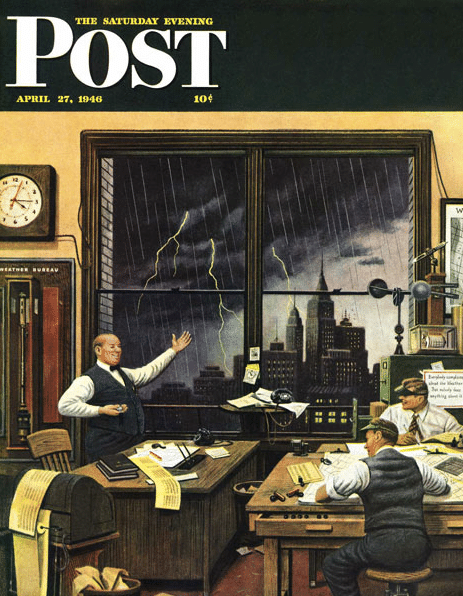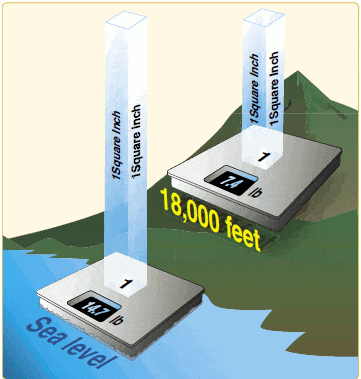Fair or Foul?
Finding out the weather forecast these days is as easy as turning on the TV or checking your phone. That wasn’t always the case, though. In the hundreds of years before television and even radio, people used more rudimentary devices to predict what the skies would bring in the coming days.
One of those tools was the barometer. Once common in aircraft, ships, and ordinary households across the world, it predicts approaching weather by measuring changes in air pressure. While technological advancements have replaced the humble barometer in meteorological circles, they’re still fun to have at home and know how to read.
In this article we offer a primer on the history of barometers, how they work, and how to use one today to predict the weather. Barometers allow you to feel more connected to the natural forces at work outside your window, and free you from being completely reliant on those oft-wrong apps and local forecasts (studies have shown that local meteorologists inflate the chances for poor weather because it garners better ratings!).
A Brief History of the Barometer

What started as an experiment in 1640 to prove the existence of natural vacuums led to the discovery of atmospheric pressure. In 1643, Evangelista Torricelli filled a long tube with mercury, closed the end, and placed it in a shallow, open cistern that also contained mercury. When the tube was opened, mercury flowed out and filled the cistern, but then stopped about a quarter of the way down the tube and didn’t continue to pour out. Something had to be pushing down on the mercury in the cistern to make it stop, and that something turned out to be the atmosphere itself, which had previously been believed to be weightless. And so the first barometer was born.

As seen on the right, looking glasses (mirrors) were often placed near barometers and thermometers, as they helped people decide what clothes they were going to put on that day!
In just a couple decades, the instrument became available to well-to-do gentlemen and scientists of both the professional and amateur variety. Woodworkers in the late 17th century took great pride in fashioning elaborate housings for these new weather devices, and it became a popular sign of wealth and nobility to display a barometer in one’s home. The founders of our country were among those fond of them; both Washington and Jefferson made daily recordings of the air pressure in their journals.

In 1840, the first mechanical, non-liquid barometer was invented. It quickly took hold, not because of the concerns about mercury (like there are today), but because of the simplicity of transporting these devices. They were much smaller and therefore cheaper, as mercury barometers had to be at least 3 feet tall for the air pressure to even out the liquid pressure, which is necessary for the instrument to work. By 1900, the mercury barometer was largely replaced by these mechanical, or aneroid, versions, and barometers became more accessible for the common citizen.
Up through the 17th century, making forecasts from the data gleaned from barometers remained a very imprecise science; about all they did was predict storms when the mercury rapidly fell, and no one really understood the science of weather and atmospheric pressure yet. It wasn’t until the mid-1800s that English sea captain Admiral Fitzroy did some extensive experiments with his barometers and came up with the first detailed forecasting tables. He is now credited with starting the weather forecasting industry and he discovered the predictive significance of rising and falling barometric pressure (which we’ll get to shortly). At the same time Fitzroy was at work, meteorologists and weather hobbyists all across the world were adding to the data and the scientific understanding of how weather systems operate and move by trading letters with their fellow observers.

Once the telegraph was invented, and this swapping of information became far easier, weather forecasting really took off. Weather observations and data could now be rapidly transmitted and therefore graphed and analyzed. Forecasts slowly became more accurate, and noting how the ability to predict storms and frosts saved lives and aided commerce, agriculture, and the military, the government founded the Weather Bureau (now the National Weather Service) in 1870. Hundreds of Weather Bureau meteorological stations around the country relied on readings from barometers, thermometers, hygrometers (measuring humidity), as well as observations from the field and at sea, to offer forecasts to farmers, sailors, and ordinary citizens.

Meteorologists continued to use traditional barometers well into the mid-1900s.
It wasn’t until the mid-20th century that computers began to be used in weather forecasting, and the use of traditional monitoring tools like the barometer really declined. While pressure readings are still obviously a major part of forecasts, it’s done digitally rather than by the manual analysis of readings.
While “analog” barometers are no longer employed by professional meteorologists, knowing how to use one is a neat skill to have. And the first step towards gaining that know-how is understanding what atmospheric pressure really is.
What is Atmospheric Pressure?

Air pressure decreases as altitude increases.
Atmospheric pressure — or barometric pressure — is simply the weight of the air at ground level. It’s a little easier to understand when you think about the concept of water pressure first. As you get deeper in water, the pressure increases. This is because as you descend, the built up weight of the water on top of you increases. In 1 foot of water, you have the weight of that foot of water pressing down on you. In 2 feet of water, you have the weight of an extra foot of water pressing on you. It’s quite logical, really.
Now, think of land as being the bottom of the atmospheric ocean. As was proven by Torricelli, air is not weightless. So barometric pressure is the weight of the air from the top of atmosphere all the way down to you. Understandably, pressure is lower as you get higher in elevation — there’s less air on top of you.
Atmospheric pressure is generally measured in inches of mercury (in America, that is — it’s in millibars in metric nations), which goes back hundreds of years to Torricelli’s mercury barometer, which in basic form was still used up until the last decade or so. With the dangerous liquid now being outlawed in most places, and more modern barometers taking hold, the measurement is starting to be replaced by what’s called hectopascals. It is basically a measurement of pounds per square inch, which is more accurate to what’s actually happening with the air. Either way, on any consumer barometer you see today, your measurement will be in inches or millibars.
Now that we know what pressure is, let’s see how it affects our weather. Or more accurately, how the weather affects air pressure.
Leave a Reply